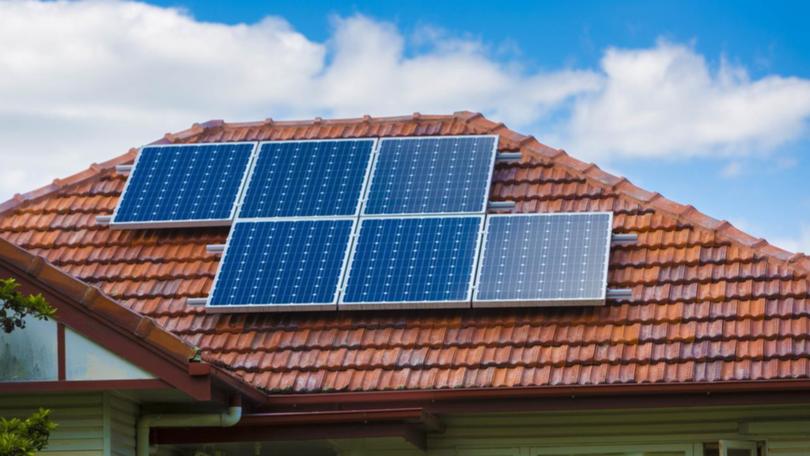Made or assembled in Australia? Federal Government’s solar policy under fire

Australia’s ability to manufacture solar panels has been called into question, with renewable energy experts asked whether a $1 billion program to support their creation would fund the assembly of foreign parts.
Environment and energy groups, including the Australian Renewable Energy Agency (ARENA) and Climate Change Authority, appeared at the senate estimates hearing in Canberra on Monday, with representatives also discussing nuclear energy and a start date for Snowy Hydro 2.0.
The hearing comes one week after a heated debate over energy sources at the Nuclear Power Generation inquiry and as the Federal Government considers a 2035 emissions reduction target.
Sign up to The Nightly's newsletters.
Get the first look at the digital newspaper, curated daily stories and breaking headlines delivered to your inbox.
By continuing you agree to our Terms and Privacy Policy.ARENA’s Solar Sunshot program, established in March to invest in Australian solar energy innovations, came under scrutiny early at the hearing.
National Senator Ross Cadell asked whether the projects it funded would be required to manufacture solar products or could assemble them using foreign components.
ARENA chief executive Darren Miller said it was too early to judge Australia’s solar industry or the scheme as applications were not due until December 10.
He said Australian firms could use solar panel parts that had been manufactured overseas, just as local car manufacturers had done.
“What we’re looking to do here is ... to take that first step, if you like, into the manufacturing of solar (photovoltaic) technology and if that first step happens to be the assembly of modules because it’s the easiest, cheapest and most competitive thing we could do, well that may be something that is worthwhile doing,” Mr Miller told the committee.
“But we’re open-minded as to what we see come forward in this program and it’s too early to start reaching conclusions about what is good or bad in terms of the pipeline.”
Labor senator Tim Ayres said most solar panels were manufactured in China, even though Australian researchers were responsible for some solar breakthroughs, and the Solar Sunshot program was designed to get local firms involved in the technology again.
“Every single panel in the world has Australian IP at the heart of it,” he said.
“It is in Australia’s interest to participate in this area of industrial activity.”
Nuclear power options also made an appearance at the hearing, with former NSW minister and Climate Change Authority chair Matt Kean telling senators that investments in renewable energy would make more financial sense in Australia.
He said the falling price of battery technology for storage underlined the attraction of renewable energy, but research also showed nuclear reactors would take too long to build.
“Nuclear can’t be built quickly enough to replace aging, coal-fired power generators that are due to retire in the next decade,” Mr Kean said.
“One of the reasons that we rejected it in NSW, the coalition government that is, is because it would take at least 15 to 20 years to build a first-of-its-kind nuclear reactor.”
Snowy Hydro executives also appeared before the committee, with chief executive Dennis Barnes confirming the hydro-electricity project was 61 per cent complete and on track to start in December 2028.
The company had also applied to use more diesel fuel than expected for “a number of weeks” during its commissioning phase, Mr Barnes confirmed, due to the late arrival of gas supplies.
